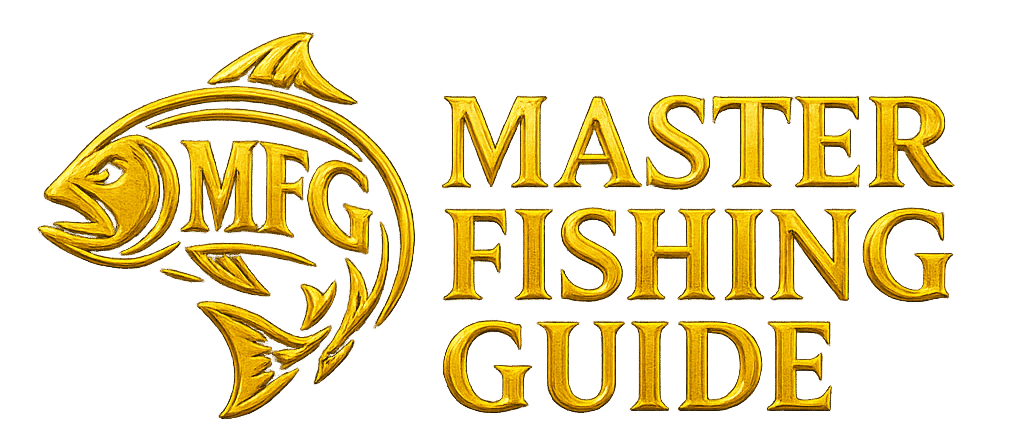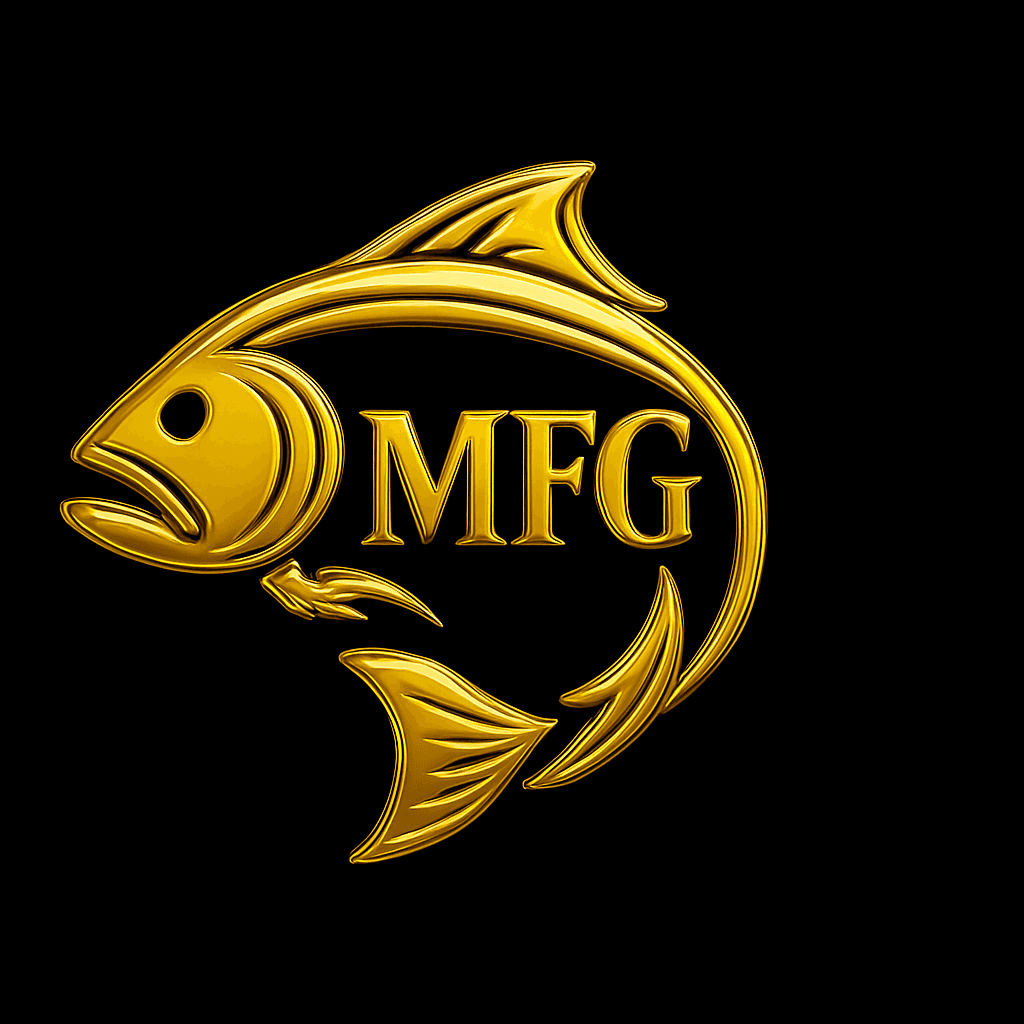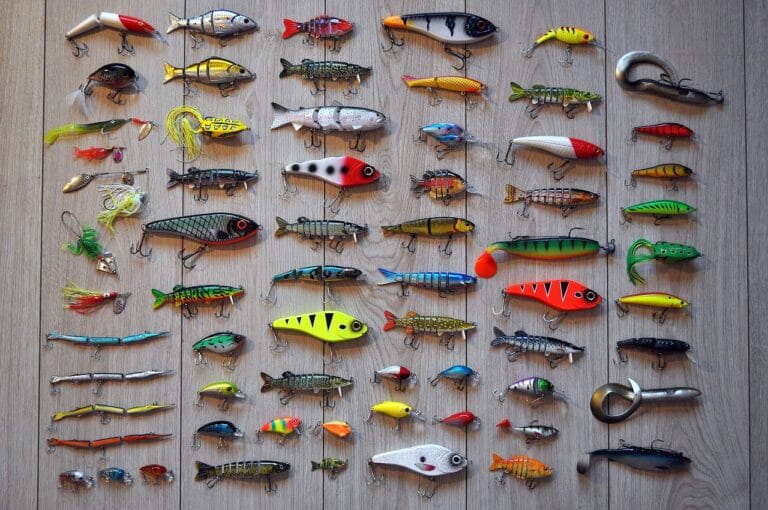How to Catch Bass on Topwater: 5 Tips and Lures for Explosive Strikes
Few things in fishing compare to the thrill of a bass smashing a lure on the surface. That instant explosion — water flying, line tightening, heart pounding — is what keeps topwater addicts coming back for more. But behind every “explosive strike” there’s more than luck. Catching bass on topwater baits demands timing, precision, and the right presentation.

As an Amazon Associate, we earn from qualifying purchases — no cost to you. That’s how we keep this site running. Read more ›
This guide will walk you through proven topwater bass fishing techniques that work across lakes, rivers, and ponds. You’ll learn when topwater lures shine, how to trigger surface strikes, and which baits consistently produce results — from poppers and frogs to buzzbaits and walking baits. Whether you’re chasing largemouths in calm water or smallmouths on choppy flats, understanding topwater behavior is what separates an average angler from a master of the strike.
We’ll break down five key tips and lure setups that dominate the surface game. Each tip comes from real-world experience — early mornings, low-light ambush zones, and countless missed blowups that taught us exactly what triggers a bass to explode. This isn’t theory; it’s battle-tested fishing knowledge built for those who want to catch more and miss less.
By the end, you’ll know the best temperatures (above 60 °F / 15.6 °C) to throw topwater, how to read water conditions, and which rod and line combinations deliver perfect lure control. If you love the idea of explosive topwater action, this is your complete guide to mastering it — one cast at a time.
What Makes Topwater Bass Fishing So Exciting
Every angler remembers their first topwater strike — that heart-stopping second when a bass explodes through the surface and destroys the bait. Unlike subsurface techniques, topwater fishing happens in plain sight. You see the chase, the wake, the swirl, and then the explosion. It’s not just fishing — it’s an adrenaline sport with fins.

Topwater fishing connects you directly to a bass’s predatory instincts. When bass rise to hit a surface lure, they’re not feeding out of hunger — they’re reacting. It’s aggression, dominance, and territory all wrapped into one violent strike. That’s why even a smaller bass can hit like a cannonball when you’re fishing topwater.
The surface bite also gives you an unmatched level of control and creativity. Every lure — from poppers to buzzbaits — has its own rhythm. Some demand slow twitches and pauses, others thrive on speed and chaos. Once you master how each bait behaves, you can literally “talk” to the fish through cadence and motion.
There’s another reason this style is so addictive: feedback. With topwater, every cast gives you visual data. You can read a bass’s mood just by how it approaches the lure — follows without striking, swirls under it, or detonates on impact. That visual feedback loop teaches you more in one morning than hours of blind casting below the surface ever could.
In short, topwater bass fishing isn’t just about catching fish — it’s about the rush, the control, and the connection between angler, lure, and predator. Once you experience that surface explosion, you’ll never look at calm water the same way again.
When to Use Topwater Lures for Bass (Best Time, Weather & Conditions)
Knowing when to use topwater lures for bass is what separates lucky strikes from consistent success. Topwater baits don’t work all the time — they shine under the right mix of temperature, light, and water conditions. If you hit those windows, the surface bite becomes electric.

Water temperature: The magic starts when the surface temperature rises above 60 °F (15.6 °C). Below that, bass metabolism slows down and they won’t chase fast-moving baits. Ideal topwater action peaks between 68–80 °F (20–26.6 °C), when bass are most aggressive and feeding near the surface.
Time of day: The golden hours are early morning (sunrise) and late evening (sunset). Low light makes bass feel safe to attack from cover. On cloudy days, you can extend that window and get bites all day long. Bright, calm afternoons usually shut the bite down unless there’s shade, wind, or boat wakes to break up the surface.
Weather and wind: Slight ripple on the water is perfect — it hides your lure’s imperfections and gives bass confidence. Too much wind (whitecaps) kills visibility, but flat calm can make fish too cautious. Overcast skies and light rain are your best friends for an all-day topwater bite.
Water clarity: In clear lakes, bass track baits visually, so go subtle — natural colors, smaller lures, slower retrieve. In stained or muddy water, switch to louder options like buzzbaits or popping lures that create strong vibration and sound to help bass locate the bait.
Topwater fishing isn’t about random casting — it’s about matching the rhythm of the environment. Watch the light, the wind, and the water temp, and the surface will tell you exactly when it’s time to make your move.
5 Tips and Lures for Explosive Bass Topwater Strikes
Topwater bass fishing delivers an unmatched adrenaline rush. The sight of a bass exploding through the surface is pure chaos and precision combined — but it’s not luck. To consistently create those explosive strikes, you need a perfect mix of lure selection, retrieve control, and environmental awareness. These five tips and lures will help you dominate every surface bite.

1. Match Your Lure to the Season
Seasonal change affects how bass feed near the surface. During hot summer days, fast-moving buzzbaits and walking baits shine. In early spring or late fall, subtle poppers and prop baits perform better in cooler water. Once temperatures drop below 60 °F (15.6 °C), surface activity slows — similar to cold water behavior when bass move slower but still hunt in the shallows.
2. Use the Right Retrieve Rhythm
Retrieve speed is the difference between a missed strike and a hook-up. Most anglers retrieve too fast. Try the “pop–pause–pop” rhythm with poppers, or a smooth, steady buzz with prop baits. When fishing in low light or during night fishing sessions, slow it down even more — bass locate your lure by sound and vibration, not sight.
3. Target the Right Structure
Bass are ambush predators. They strike best near cover like grass lines, logs, and docks. Focus your casts on shallow flats early in the morning or near structure transitions where baitfish travel. Understanding how depth, season, and cover interact — much like in where to find bass patterns — is the key to predicting those topwater explosions.
4. Pick Lures That Fit the Conditions
Always adapt your lure type to water clarity, wind, and light. In clear and calm water, use natural walking baits with subtle movement. In choppy or stained conditions, go aggressive with buzzbaits or prop lures. Pair them with a balanced rod and reel setup — medium-heavy power and fast action are perfect for long casts and strong hooksets. For complete equipment breakdowns, the bass fishing guide covers rod and reel tuning for every lure type.
5. Fish the Best Topwater Locations
Topwater bites explode in shallow zones loaded with baitfish. Look for vegetation edges, points, and calm backwaters early in the morning. Lakes with healthy grass, oxygen, and light ripple produce consistent surface activity. Some of the most reliable destinations for this kind of action can be found in the best bass fishing lakes in the USA, where calm dawns often deliver unforgettable topwater strikes.
When you combine these five fundamentals — seasonal lure adjustment, retrieve rhythm, structure targeting, lure matching, and smart location choice — bass topwater fishing turns from random chaos into a science of controlled explosions. Every cast becomes a calculated chance to watch the water erupt.
Best Topwater Lures for Bass
Our long-term testing and field research across U.S. and European waters have proven that certain topwater lures consistently outperform the rest. Each of these baits earned its place through hundreds of casts, dozens of missed blowups, and verified strike ratios. Below you’ll find the most effective topwater lures for bass — plus how to cast and work them correctly for the most explosive results.

River2Sea Whopper Plopper
This lure creates a violent commotion with its rotating tail that churns the surface. Cast it long over open water or parallel to weed edges. Begin reeling immediately after splashdown to keep the tail spinning. Maintain a steady retrieve and never stop winding — hesitations kill the action. Whopper Plopper works best at dawn or dusk when bass are feeding shallow but scattered.
Rebel Pop-R
Cast close to visible cover — docks, laydowns, or grass lines — and let the rings settle. Use a short, crisp “pop-pause-pop” cadence to imitate an injured baitfish. Vary the pause length until you trigger a reaction strike. The Pop-R shines in calm, clear water and is deadly during early mornings with no wind.
Booyah Buzz
The Buzzbait is built for speed and noise. Cast it past your target zone and start reeling the moment it hits the water to keep it on top. Retrieve steadily so the blades slap and squeal on the surface. In murky or windy water, this sound draws fish from distance. It’s perfect for covering water quickly and provoking aggressive reaction strikes.
SPRO Bronzeye Frog 65
Designed for heavy vegetation. Cast it deep into lily pads or thick grass mats and twitch gently to make it “walk” across the surface. Pause occasionally beside open holes — bass often strike right after the stop. Use a heavy braid line and strong hookset to pull fish out of cover. Early summer mornings are prime time for this frog bite.
Heddon Zara Spook
The original “walk-the-dog” lure that started it all. Cast long and let it settle. With the rod tip pointed down, twitch side-to-side rhythmically while reeling slowly — the lure will glide in a tight zig-zag pattern. Keep your cadence consistent and be ready; strikes often happen just as you pause. Ideal for calm, clear conditions.
Each of these lures earned its reputation through real-world performance, not hype. They remain the top choices for anglers chasing surface explosions in lakes, rivers, and ponds. Pair them with the right rod and reel setup and you’ll turn missed blowups into consistent hookups.
Best Lines for Topwater Bass Fishing (Braid, Mono & Fluoro Explained)
Getting the right line can mean the difference between watching a surface strike and actually hooking the fish. From dense frog-covered zones to calm glassy flats, our testing shows you which line types work best for which conditions. Below are three top choices you’ll want spooled and ready for your next topwater assault.

Braid Line for Heavy Cover & Buzzbaits
When you’re working a heavy vegetation edge, thick lily-pad mats, or ripping a buzzbait full speed, you want to go braid: minimal stretch, maximum sensitivity, superior abrasion resistance, and the power to drive a hook home. In those scenarios, mono just won’t cut it.
PowerPro Spectra Fiber Braided Fishing Line 50 lb
Monofilament Line for Poppers & Calm Conditions
For those slow dawn sessions, dock-end casts, or glassy-water walks with a pop-pop-pause style topwater lure, mono gives you the stretch you need and the classic “give” on the hit. It lets bass inhale the bait before you set the hook — crucial for subtle surface bites.
Berkley Trilene XL Monofilament Fishing Line 10 lb
Fluorocarbon Leader for Clear Water & Stealth Presentations
When the water’s ultra-clear and the bass are wary, adding a short fluorocarbon leader gives you invisibility, better abrasion resistance, and a cleaner hookup. Use it especially when switching from braid to a topwater frog in grass, or trailing a walking bait in gin-clear flats.
Seaguar Fluorocarbon Fishing Line (Leader)
Pairing the right line type with your lure style and water conditions is what turns random surface slaps into consistent hookups. Match braid for heavy cover, mono for poppers and walkers, and fluoro leaders when the bite is delicate and the water is clear.
| Combination | When to Use | Notes |
|---|---|---|
| Braid + Fluoro Leader | Thick cover, vegetation, clear water | The most common and effective setup |
| Mono Only | Calm, clear water; popper and walking baits | Best for beginners and natural lure action |
| Braid Only | Muddy water, aggressive bass, frog & buzzbait | Maximum strength and sensitivity |
Best Topwater Bass Fishing Tips for Beginners
Every angler wants that explosive surface strike — but most beginners struggle to make it happen. Topwater bass fishing isn’t about luck; it’s about timing, lure control, and patience. These simple, battle-tested tips will help you fish smarter, miss fewer bites, and finally turn those surface blowups into solid hookups.

1. Wait Before You Set the Hook
When a bass explodes on your lure, your first instinct is to swing hard — don’t. Let the fish take the bait and pull tension before setting the hook. Beginners often yank too soon and pull the lure straight out of the bass’s mouth. Train yourself to pause one heartbeat after the splash before driving the hook.
2. Match Lure Speed to Conditions
Calm mornings require slow, precise retrieves — think pop-pause-pop with a Rebel Pop-R. When the wind picks up, speed things up with a Booyah Buzzbait or Whopper Plopper. Always adjust retrieve rhythm based on surface activity — fast when baitfish are fleeing, slow when it’s quiet.
3. Focus on High-Percentage Zones
Topwater bites don’t happen everywhere. Aim for high-probability ambush spots: grass edges, shaded docks, submerged timber, and transition lines where shallow meets deep. Bass in these zones are positioned to strike upward — exactly where your lure will pass.
4. Choose the Right Line and Rod Setup
Your line and rod combo can make or break your topwater game. Use braid (30–50 lb) for frogs and buzzbaits in heavy cover, and mono (10–15 lb) for poppers and walking baits in open water. Pair it with a fast-action medium or heavy rod for perfect lure control.
5. Pay Attention to Light and Temperature
Topwater is most productive during low light — sunrise, sunset, or overcast days. Once surface temperatures reach above 60 °F (15.6 °C), bass begin feeding upward. Use bright colors in murky water and natural tones like shad or bone in clear conditions. Always read the light and match your presentation.
6. Keep Casting — Confidence Catches Fish
Topwater fishing requires persistence. You’ll miss strikes, have blowups that don’t connect, and go through calm stretches — but every cast is another chance for a heart-stopping explosion. Confidence and consistency separate the anglers who watch topwater magic from those who live it.
Mastering these basics will make your next surface session more productive and far more exciting. Once you learn the rhythm — the pauses, the angles, the speed — you’ll start predicting each strike before it even happens. That’s when topwater bass fishing truly becomes an addiction.
Final Thoughts on Topwater Bass Fishing
Topwater bass fishing is more than just catching fish — it’s a combination of timing, rhythm, and instinct. Every visible strike on the surface teaches you something new about fish behavior, lure cadence, and patience. Once you master the pause and the retrieve, the water itself starts talking back — and that’s when the real addiction begins.
If you want to learn more about how fish respond to environmental changes and feeding patterns, check out NOAA Fisheries — a science-based organization dedicated to understanding aquatic ecosystems worldwide.
When you land that perfect topwater strike, share your catch on the Master Fishing Guide Facebook Page — we’d love to see it.
Tight lines, and may every cast bring a surface explosion!








